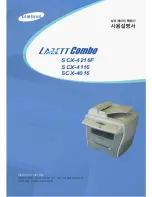
7-4
Paper Handling > Available Paper Size and Type
Moisture absorption
The moisture absorption of paper affects the rigidity of paper and color expression.
If high-density printing is performed on paper with a low moisture content or plain paper, curling may occur, and when
ejected from the right tray, may push away other paper, fail to stack, or jam. To avoid this problem, use heavy paper.
Long grain and short grain paper
Paper has a direction that is easy to tear, and a direction that is difficult to tear. This is because the orientation of the
fibers varies depending on the direction the pulp is discharged while manufacturing the paper. It is easy to tear paper
along the orientation of the fibers, and difficult to tear perpendicular to the orientation of the fibers. The orientation that is
easy to tear is long grain, and the orientation that is difficult to tear is the short grain.
When short-grain paper is used for printing, it tends to bow and does not stack evenly when output.
Make sure there are no tears, creases, folding, or dirt
Check the condition of the paper before loading it. Tears, creases, and folds may cause paper jams, double-feeding, and
skewing. Ink may soil the inside of the machine if a paper jam occurs under the print head. Dirt on the paper may adhere
to the feeding rollers and cause subsequent paper to become dirty.
Make sure there is no burring
The machine supports cut paper, but make sure there is no burring on the cut edge before loading the paper. If the cut
edges are uneven and there is burring (a ridge that forms when the paper is cut), the paper will not feed correctly and
skewing, double-feeding, or paper jams may occur. The burring may also cause paper dust that will degrade print
quality. Do not use paper with burring.
Make sure there is no curling
Most paper naturally tends to curl after the package is opened. Using curled paper without correction may damage the
print head and prevent good print results from being obtained after that. Curled paper may also cause paper jams. If
turning the paper over does not correct the curl, open a new package of paper and use that paper.
Other Paper Specifications
Porosity
: The density of the paper fibers.
Stiffness
: Paper must be stiff enough or it may buckle in the machine, causing jams.
Whiteness
: Paper whiteness affects print contrast. Use whiter paper for sharper, brighter copies.
Packaging
: Choose paper that is properly packaged and stacked in boxes. Ideally, the packaging itself should have
been treated with a coating to inhibit moisture.
















































